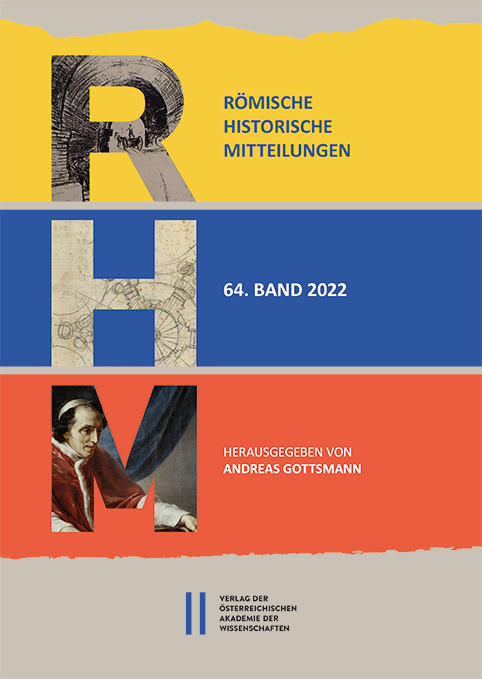 |
 |
Andreas Gottsmann (Hg.)
Römische Historische Mitteilungen 64/2022
Verena Gassner,
Friedrich Krinzinger
S. 117 - 136 doi: 10.1553/rhm64s117
Verlag der Österreichischen Akademie der Wissenschaften doi: 10.1553/rhm64s117
Abstract:
The monumental complex of Insula II, a public building in the Lower Town of Velia, founded by the Phocaeans in 535 BCE, is one of the most known and discussed buildings in the town due to the spectacular finds of marble statues. The reason why the function and the chronology of this complex remain unclear until today can be found in the complex and – because of the inadequate state of publication – difficult to comprehend history of research. In fact, the building has been understood as the meeting place of a medical school, as a place of memory of an important Velinian family or as a complex for the imperial cult. The present contribution starts with the presentation of the various stages of research and the different attempts to explain the building. On this basis, we then give a synthesis of the stratigraphical sequence found during the Austrian excavations in the so-called Triporticus court and distinguish three phases. The first phase, following the suggestion of Hans Lauter, who studied the façade of the building, is dated to the Late Republican period. After its destruction, possibly due to a mudflow, the complex that is visible today was built in the Augustan period. It is here that we can assume that the marble portraits were exhibited. In the later 1st c. AD this building was destroyed as well. While M. Napoli supposed that the reason could be found in an earthquake, testified for Pompeii in 62 AD, new investigations make it more probable that the damage can be connected with the eruption of Vesuvius in 79 AD. The subsequent phase of reorganization is difficult to reconstruct, as all contexts were already excavated in the 1960s, but the Hadrianic period, as suggested by M. Napoli, does not seem improbable. Finally, the development of Insula II is compared to a newly found building complex in Velia. The so-called Masseria Cobellis, a monumental building organized around an open court like Insula II, but housing a natural spring, was found in the vicinity of Insula II and shows not only similarities in architecture, but also in the history of the building. This allows us to reach new conclusions depending upon the stage of development of ideas and function of this area of the Lower town.
2022/12/27 13:09:13 Object Identifier:
0xc1aa5576 0x003debef
Rights:All rights reserved.For questions regarding copyright and copies please contact us by email.
Die „Römischen Historischen Mitteilungen“ wurden von Leo Santifaller begründet und erschienen erstmals 1958. Sie werden derzeit von Andreas Gottsmann, Direktor des Österreichischen Historischen Instituts beim Österreichischen Kulturforum in Rom, herausgegeben.
Band 64 (2022) der Römischen Historischen Mitteilungen ist zum überwiegenden Teil dem Andenken an die 2018 verstorbene langjährige Archäologin des Österreichischen Historischen Instituts in Rom, Gunhild Jenewein, und deren Lebenswerk gewidmet. Einem biographischen Abriss folgen u. a. Beiträge zur Erforschung der römischen Caracalla-Thermen und den österreichischen Ausgrabungen in Velia – mit beiden Themen hat sich G. Jenewein jahrzehntelang beschäftigt. Weitere Beiträge sind speziellen Problemen des antiken Baudekors und der Baugeschichte des Kolosseums gewidmet.
Aus der Beschäftigung mit Beständen des Archivio Apostolico Vaticano erwuchsen Aufsätze über apostolische Visitatoren sowie die Republik Dubrovnik in der Frühen Neuzeit, ferner über eine Romreise Kaiser Franz I. Quellengesättigt sind auch zwei Studien über Nationalitätenkonflikte und diplomatische Beziehungen im 20. Jahrhundert. Die Kunstgeschichte ist mit einer Analyse der Arbeitsweise Borrominis vertreten.
|



 Home
Home
 Print
Print
 References
References
 Share
Share
